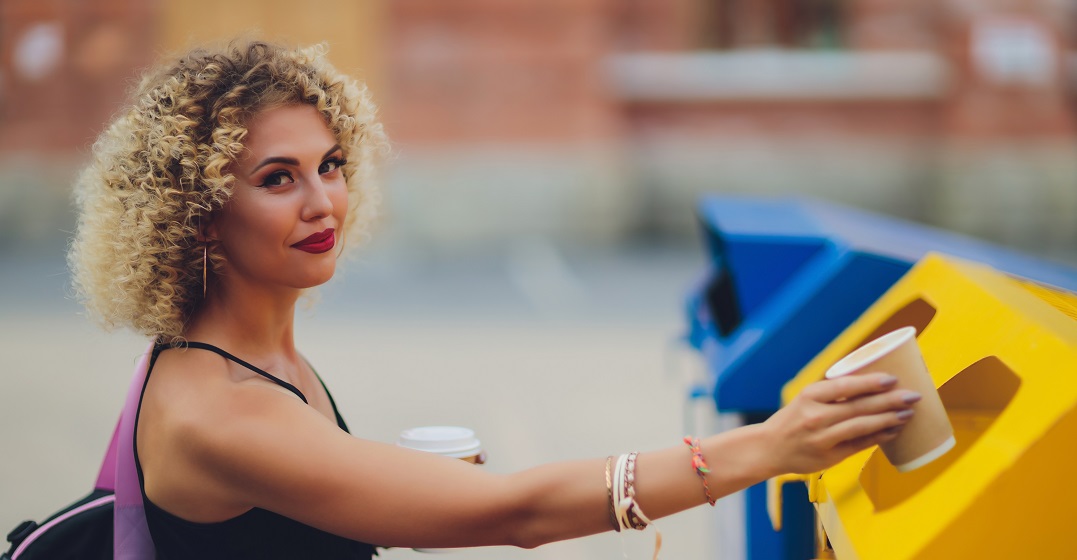Published on September 13, 2023

A guide to recycling in Germany

Germany is renowned for its focus on environmentalism, so it should come as no surprise that recycling is an integral part of the German lifestyle. According to 2017 data from the World Economic Forum, the country manages to recycle up to 56% of its waste, which represents the highest recycling rate in the world.
So, how does Germany manage to recycle so much of its waste so effectively? To a newcomer, the system may seem complex and puzzling. With up to seven different bins, you may be at a loss as to how to sort and recycle even the most common items. In this guide, we’ll review everything you need to know to become a recycling champion in Germany.
As a pioneer in protecting the environment, Germany has developed an extensive recycling system. Different bins, each with its own color, are available to sort rubbish according to their category. In total, there are seven different types of bins:
Paper and cardboard items go into the blue bin (die blaue Tonne). You’ll simply need to flatten boxes and packages before throwing them away.
The yellow or orange bin (die Wertstofftonne) is reserved for other packaging in plastic, metal or mixed materials, such as bread bags with plastic windows. Make sure to rinse the containers to reduce unpleasant odors and facilitate the recycling process.
Glass items, such as bottles and jars, that are not returnable or for which you did not pay a Pfand (deposit) at the store, can go into three different bins: a brown bin for Braunglas (brown glass), a white bin for Weißglas (clear glass) and a green bin for Grünglas (green glass). Note that you may not have a waste glass container at your house or apartment building, but you should be able to find a glass container nearby.
Containers bearing the Grüner Punkt (green dot) logo are meant for the yellow, orange or green bin, depending on their material. The logo is there to signal that the manufacturer has paid for the relevant container to be recycled. The more packaging, the higher the fee the manufacturer has to pay. This clever and effective initiative has encouraged manufacturers to significantly reduce their use of paper, glass, metal and cardboard packaging.
Brown (or sometimes green) bins are meant for biodegradable waste (Biomüll). This category includes garden waste as well as food waste, such as egg shells, vegetable peelings and spent coffee grounds.
Other household waste items (Restmüll) that are not recyclable — such as sanitary products, nappies and textiles, to name a few — go into the gray bin.
Aside from this useful bin system, Germany has come up with other initiatives to encourage and facilitate recycling.
We’ve already mentioned the Pfand (deposit) system, a scheme aimed at encouraging customers to return specific containers for money.
If you buy a product in a glass or plastic container with the Pfand symbol, you automatically pay a deposit for said container at checkout. You can get your money back upon returning the empty item. At certain small shops and kiosks, you can simply give back the bottles to the clerk in order to be refunded. In bigger German supermarkets, you can go to the Pfand machines to return your Pfandflaschen (deposit bottles). After you have deposited all your bottles into the machine, simply press the green button to get a receipt with the total refund amount. Then, at the checkout, hand over the receipt for the amount to be deducted from your grocery bill. The Pfand system allows you to return bottles to any participating store.
If a container has the label Pfandfrei (deposit free), it’s not included in the Pfand scheme. This means it’s your responsibility to throw it away in the relevant bin (see above).
There are many items that can’t go into a German recycling bin, either because they are too big or because they don’t fall into any of the accepted categories. Examples of these items include batteries, electronic items and furniture. You can dispose of such Spermüll (bulky waste) at a designated Recyclinghof (recycling center), where you’ll find several containers appropriate for different items. In case of doubt, the staff can guide you to the relevant container for your rubbish.
Hazardous waste — such as acids, insecticides, disinfectants, corrosives and emptied cans of paint — cannot go into any of the typical recycling bins, either. To dispose of such items, look out for a notice from your local council informing you when and where the truck will come for collection.
Another way to reduce waste is to offer a second life to your unwanted items. If you’re getting rid of clothes, shoes or knick-knacks in good condition, you may consider donating them or selling them at a German flea market.
From the color system of bins to specific initiatives such as the Pfand and the Grüner Punkt, there’s a strict logic to recycling in Germany. Of course, the steps you must take in order to sort and recycle your different rubbish may be time-consuming. But it’s a small price to pay to help Germany champion recycling and protect the planet.